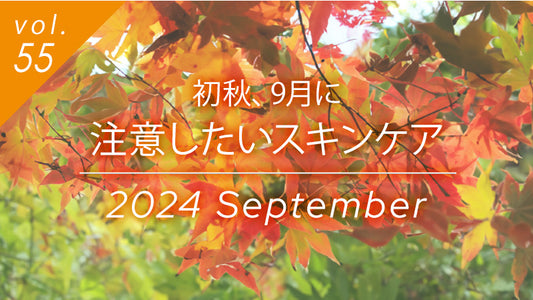
Working on whitening...
March is a busy season with many people busy with graduations, moves, and announcements of end-of-year organizational and personnel changes.
On the other hand, the seasons are steadily moving towards spring, with three cold days and four warm days repeating. It is a surprisingly harsh season, with pollen, yellow sand, PM2.5, and other things hitting us, and the temperature difference being drastic. This time, we will focus on "whitening" as a skin care for early spring.
March-specific skin stress factors
◎Pollen, yellow sand, PM2.5
The pollen season is upon us. PM2.5 in particular is a type of extremely small polluting particle that is about 1/10 the size of cedar pollen. These particles cause stress to the skin and can lead to skin problems such as rough skin.
◎ Temperature difference & dryness
Looking back at the weather data for Tokyo last year (March 2019),
Maximum temperature 23.9℃ Minimum temperature 1.1℃ Minimum humidity 17%
We can see that this is a month with extreme temperature differences. In addition, there are days with a minimum temperature of 1.1°C and a minimum humidity of 17%, which is equivalent to midwinter, and we can see that the dry conditions continue. This is a time when the skin is not yet resistant to these temperature differences and dryness.
◎Ultraviolet rays and near infrared rays
As the amount of UV rays (both UVA and UVB) starts to increase, cosmetic manufacturers are beginning to implement whitening measures and UV protection measures. Although the amount of UV rays itself is moderate, skin that has spent the winter is sensitive to UV rays because its barrier function has been weakened.
What is true whitening?
1. "Skin whitening" is a value unique to Asia The value of preferring fair-skinned women has existed in Japan since ancient times, and it is said that from the Edo period onwards, "bush warbler droppings" were used as a luxury facial cleanser to make the skin whiter. The term "skin whitening" itself is said to have been coined by a beauty researcher and then popularised. To begin with, skin colour (= skin colour) differs depending on the race, and so-called Western Caucasians have no awareness of "skin whitening". The value of preferring fair skin, which originated in Japan, can be said to be a uniquely Asian value that has spread to the yellow race, mainly in Asia.
2. What is true whitening?
Suppressing melanin production is one of the functions of whitening, but can't you imagine that the ultimate white skin is a bright, healthy-looking, soft, fresh skin without dullness, like baby skin?
It is said that the whitening season begins from March when UV exposure starts to increase, and this is a correct expression in the sense that it suppresses melanin production, but at Axesia we see true whitening as something much broader.
As winter turns to spring, let's deepen our understanding of the stressful environment that attacks the skin in March and aim for beautiful skin with skin care that suits the season!
The next theme will be "How to deal with sensitive spring skin."



